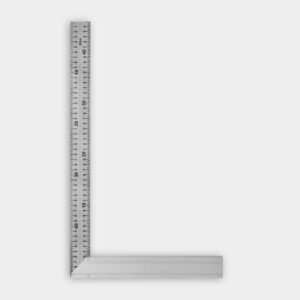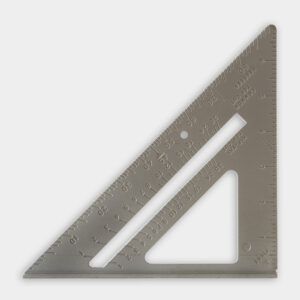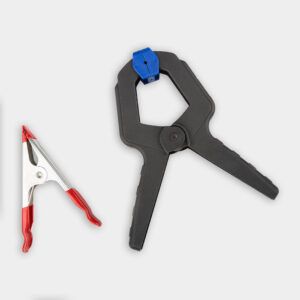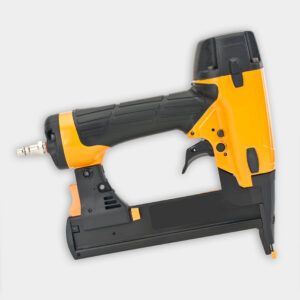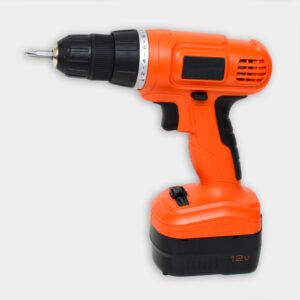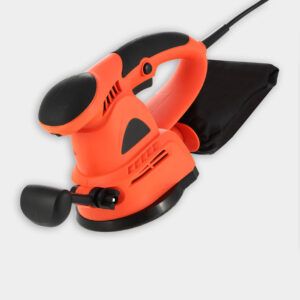Project details
Skill
Cost
Estimated Time
This easy DIY midcentury-style desk is made from four boards sandwiched on edge between two stock plywood panels. Off-the-shelf legs easily screw into angled leg brackets, which make the legs splay outward. Even better, we’re sharing the easiest way to assemble and build the body and light-duty small drawers using only glue and nails. (Note: depending on your skill level, this plan can easily be modified to include intermediate or advanced joinery.)
Steps for building a Midcentury desk:
Step 1: Mark the layout lines
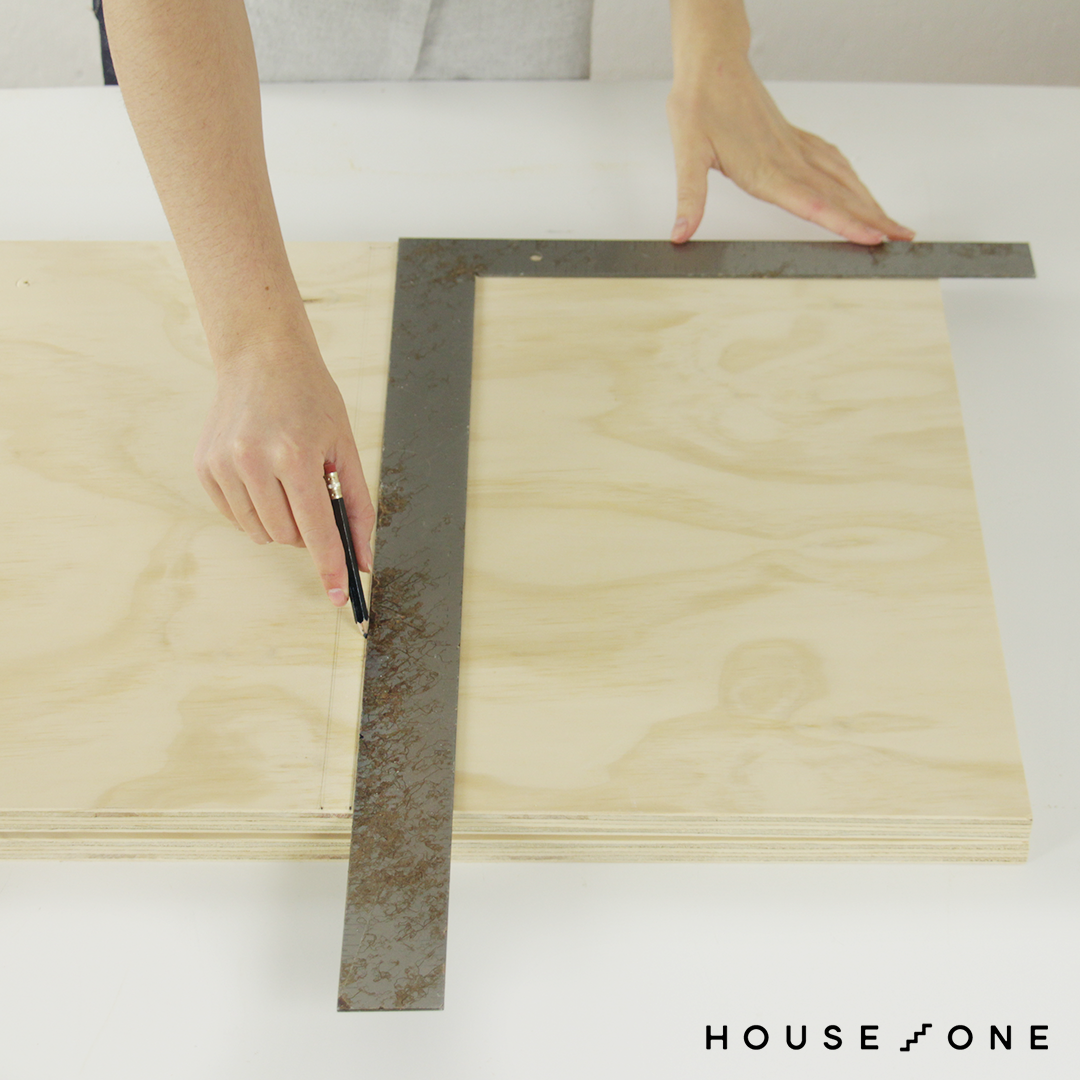
The body of the desk is made up of two plywood panels separated two ½-inch and two ¾-inch-wide boards standing on edge. The two outer dividers set flush with the ends of the plywood panels. To locate the placement of the two inside dividers, measure and mark a line 15 15/16 inches from each end of both plywood panels using a ruler or carpenter’s square. These lines signify the outer edge of the dividers. (Note: The measurement of each opening is not a perfect fraction, but about 15 3/16. For this reason, it is best to custom cut the width of the drawers ends and dry fit the parts in step six.)
Step 2: Mark the edges
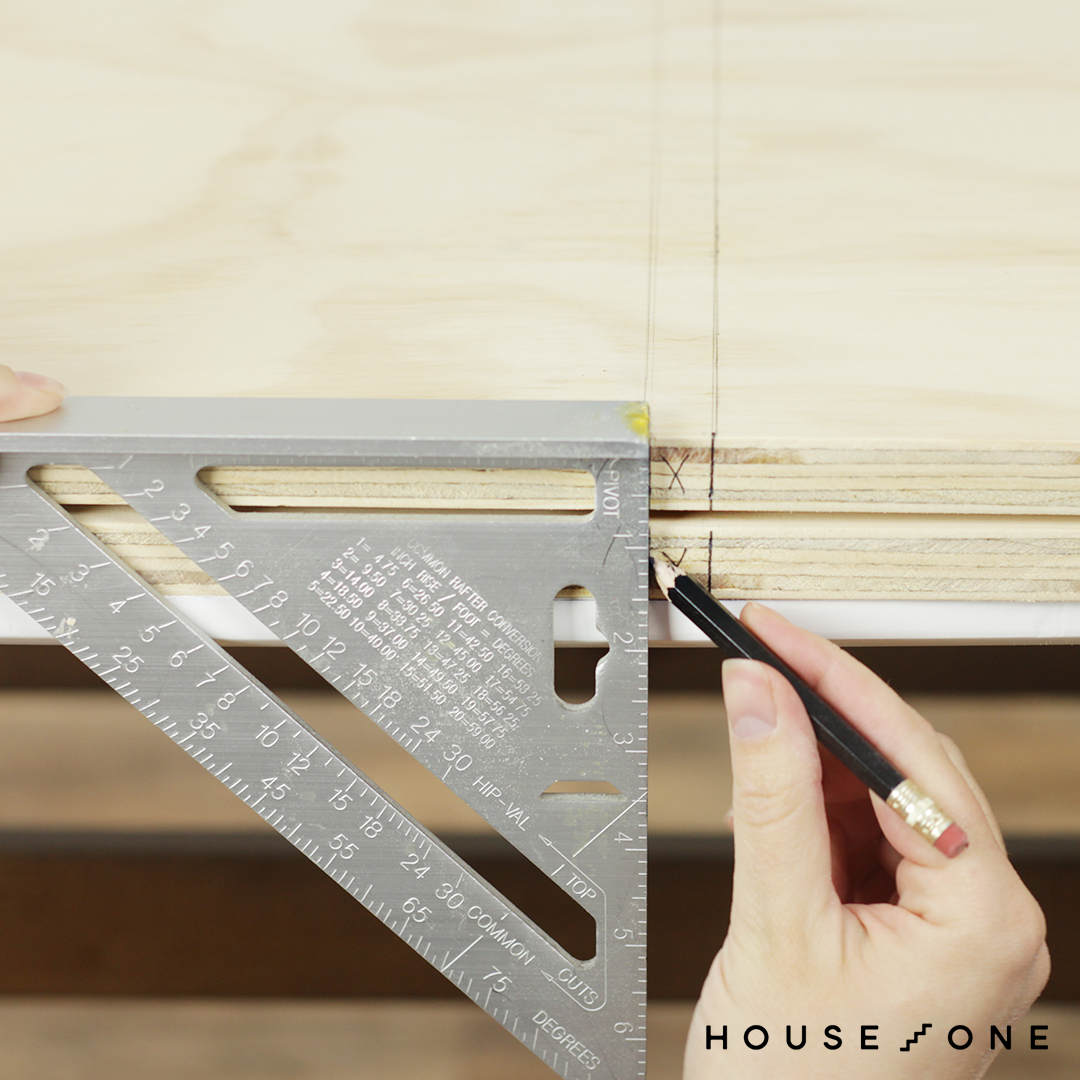
Using a speed square, transfer the outside lines of the ½-inch-thick boards using the marked lines as a center point.
Step 3: Dryfit the pieces

Place two 1 x 4 boards on edge, flush with the ends of the plywood panels. Align the inner two ½” x 4 dividers using the marks made in step one and two. Ensure the ends of the dividers set flush with the front and back edge of each plywood panel. Double-check that there is equal spacing between all four dividers.
Step 4: Assemble the pieces
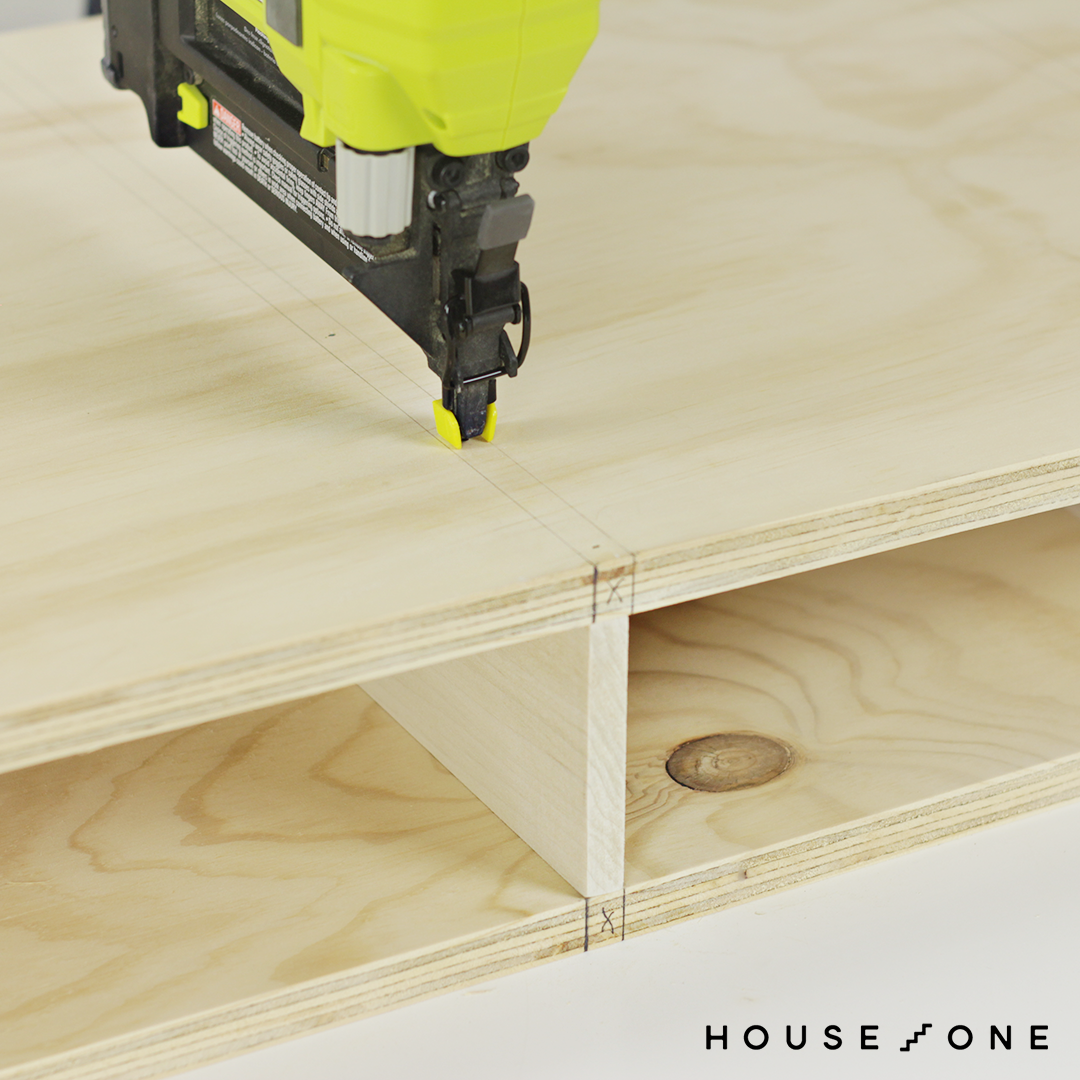
Apply wood glue to the edges of each divider, and then clamp it into place using the reference lines to keep each board perfectly perpendicular to the front edge of the plywood panels.
Step 5: Add the drawer slides
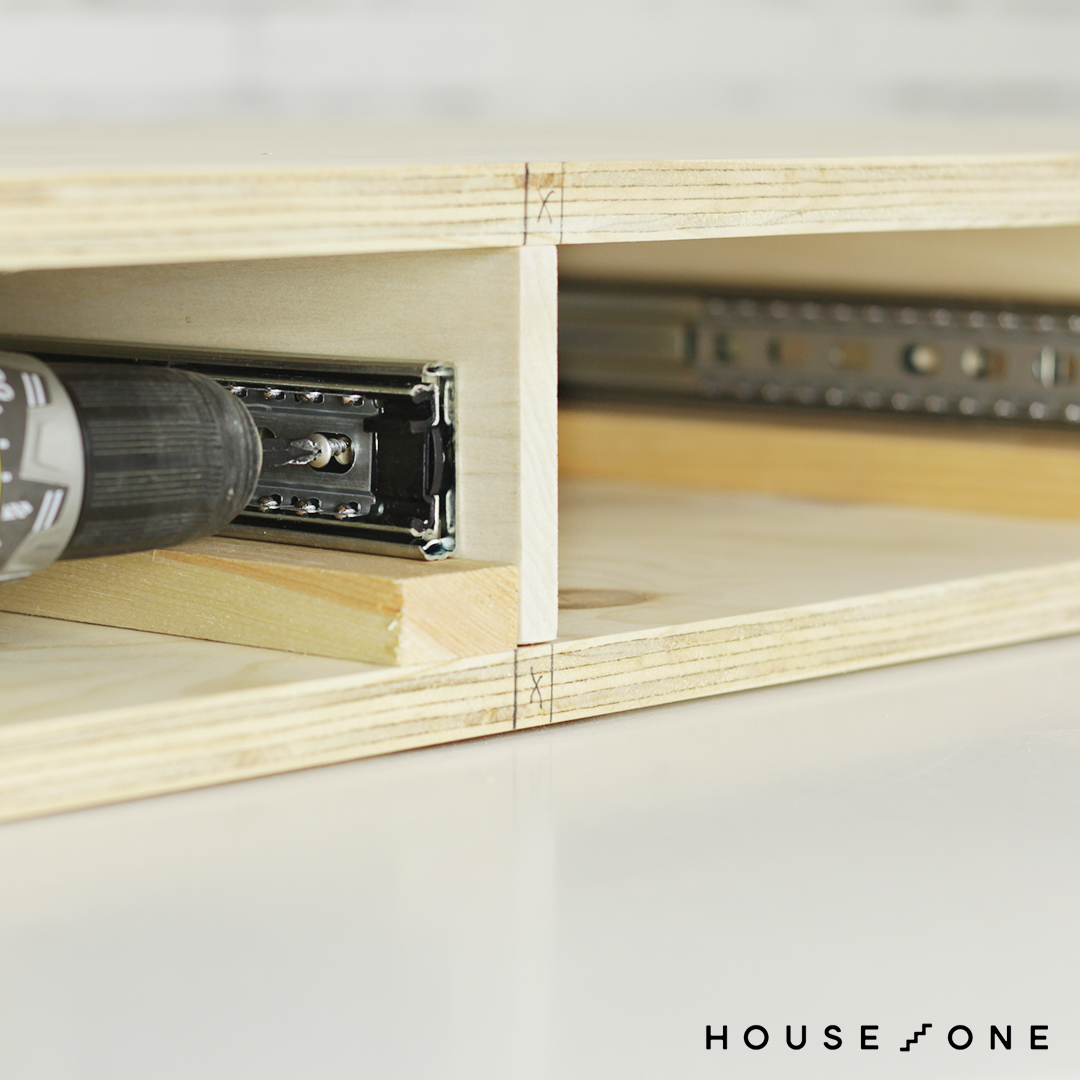
Place a drawer slide along each side of each opening. Prop a ¾-inch-thick board under each slide to raise it near the center of the height of the dividers. Using a measuring tape or scrap block, position each slide ¾-inch from the front edge of the divider. (Note: adjust this measurement to the thickness of the drawer face, if it’s not ¾-inch-thick.)
Step 6: Build the drawer frames
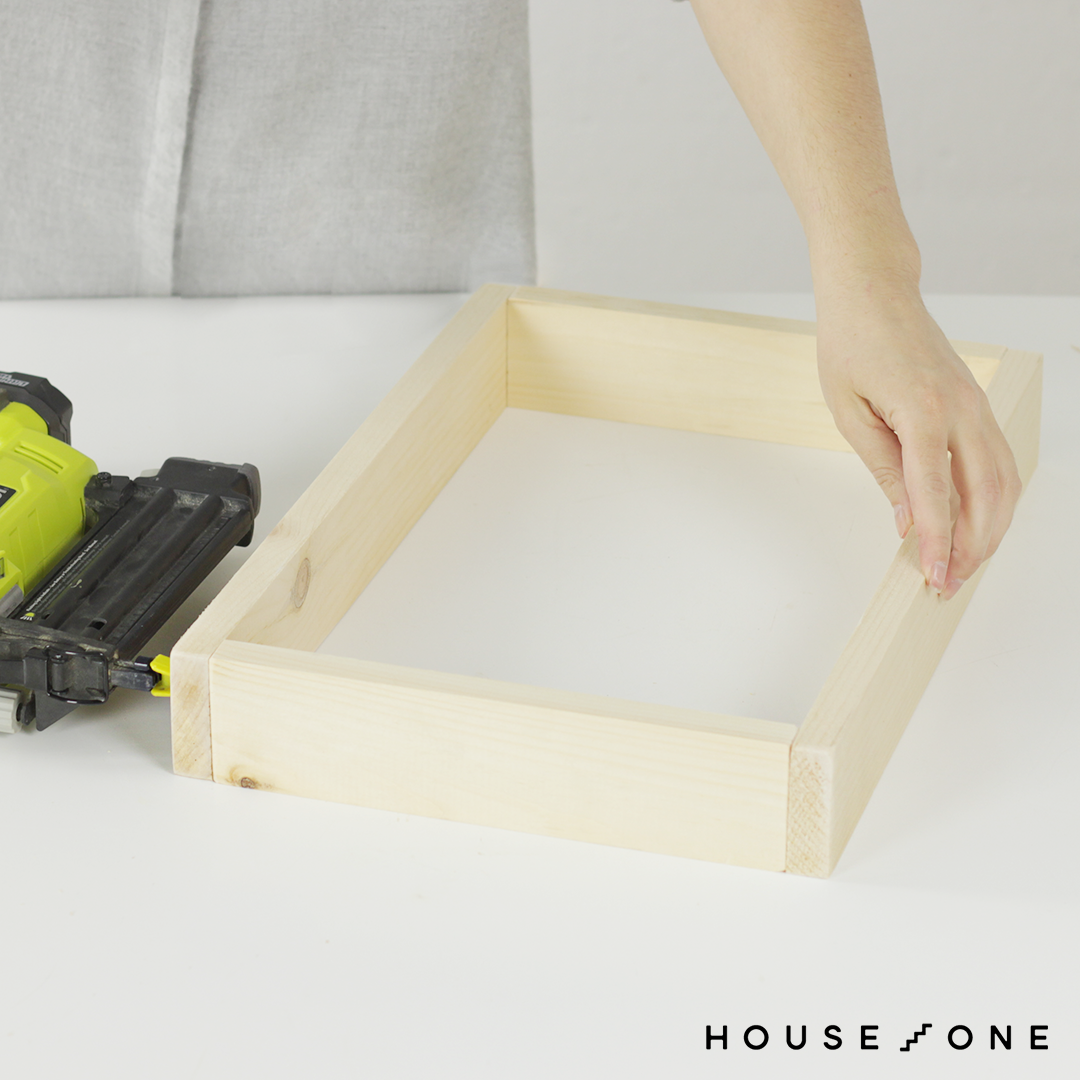
Dry fit the cut of the drawer ends by placing them beside the drawer’s side pieces inside each opening. The correct fit should create a 1-inch gap for the drawer slides to later be installed. Once cut to the correct size, layout the drawer front and back pieces inside the side pieces, flush with their ends. Apply wood glue to the ends of the front and back boards. Using a pneumatic nail gun fitted with 1¼-inch finish nails, nail through the sides and into the ends of each board.
Step 7: Attach the drawer base

On a ¼-inch-thick piece of plywood, outline each drawer, check for square, and cut to size. Apply a bead of wood glue to the edge of the drawer box. Set the ¼-inch-thick plywood drawer bottom into place, flush with the outside edges of the drawer box. Using a pneumatic nail gun, nail through the plywood and into the frame to secure the bottom in place, and provide overall support for the drawer frame.
Step 8: Mark for the slides
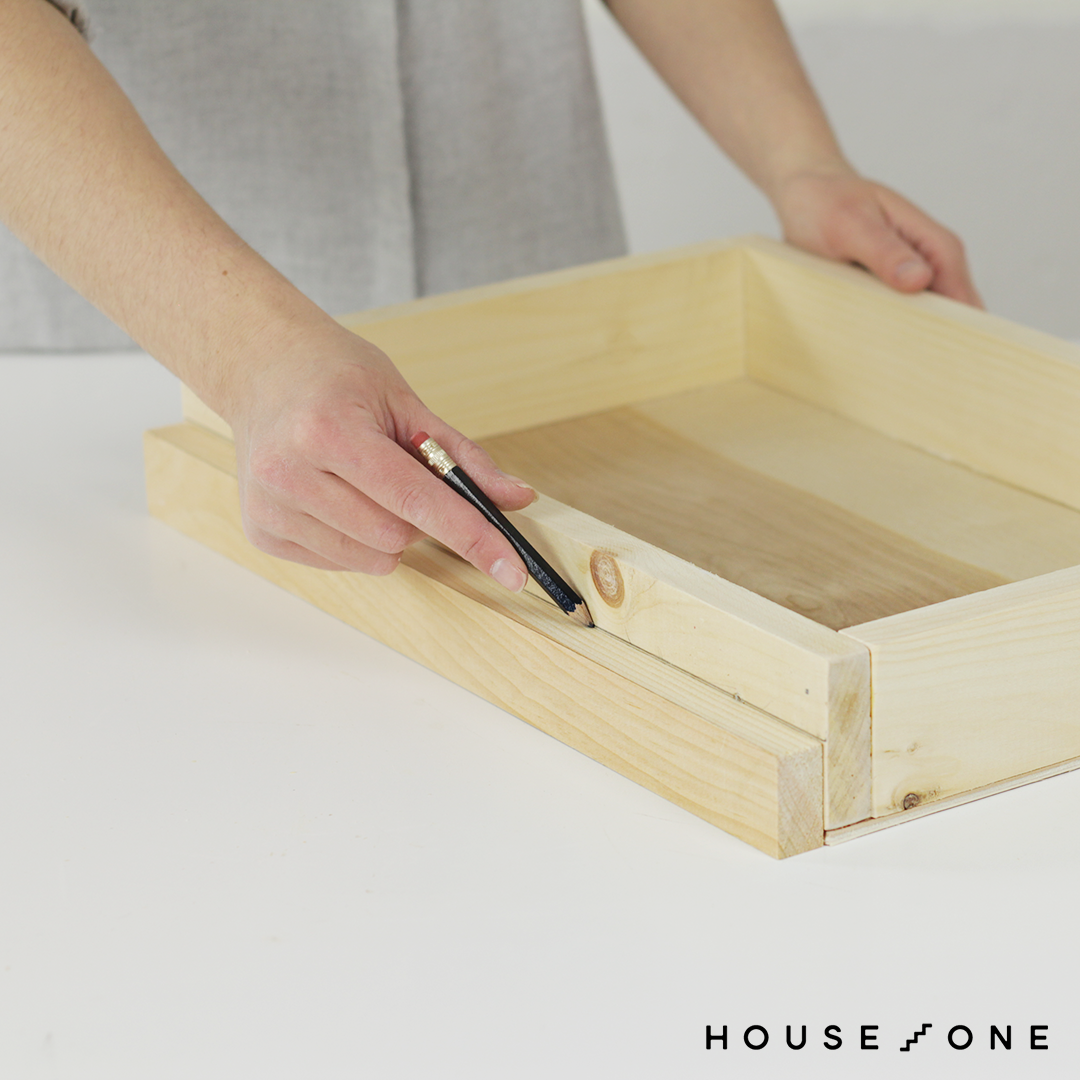
Place a 1 x 2 scrap board along each side of each drawer. Mark a line on the drawer side along the top edge of the board.
Step 9: Mount the slides
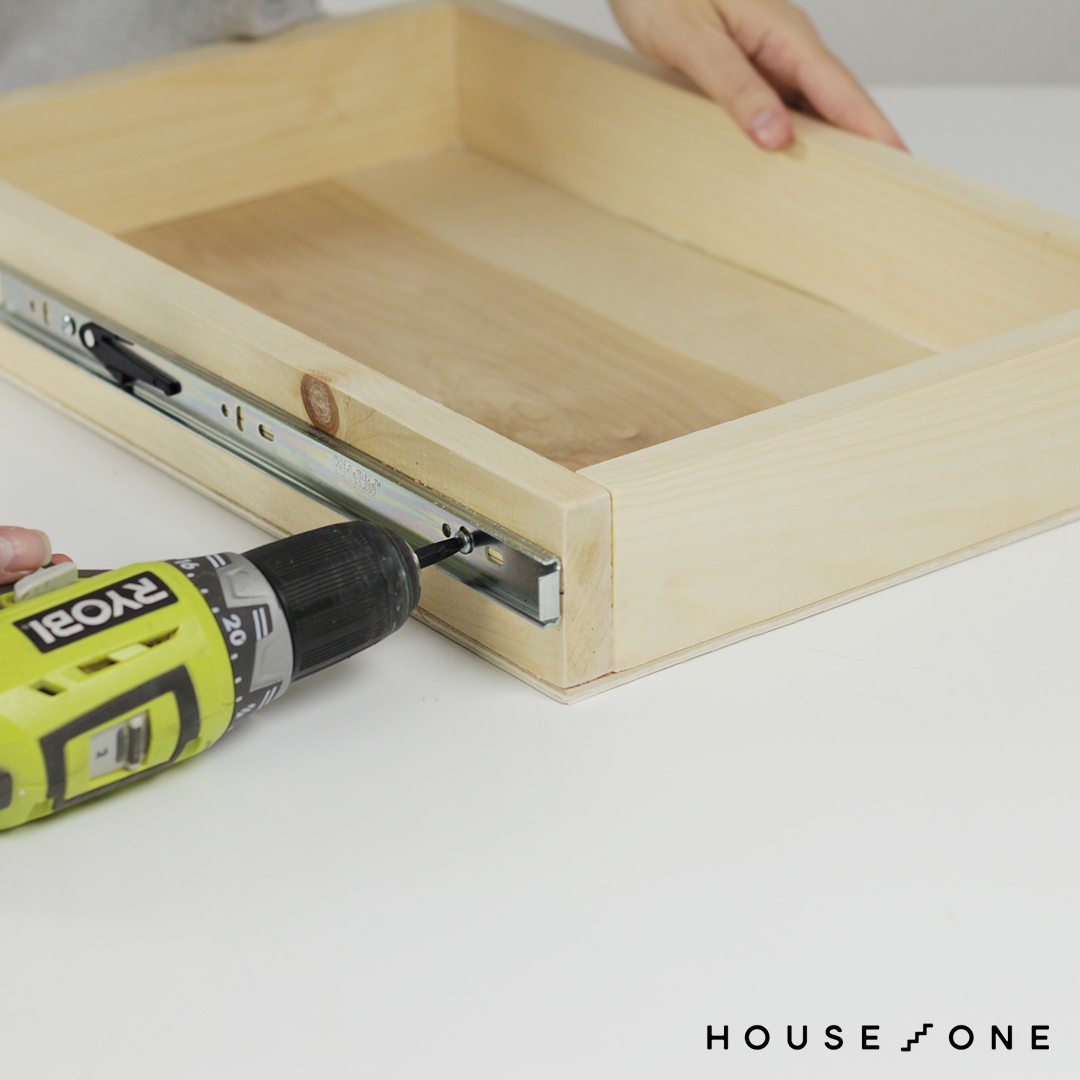
Using the lines marked in step eight as a centerline, mount the drawer slides flush with the front edge of each drawer box.
Step 10: Insert the drawers
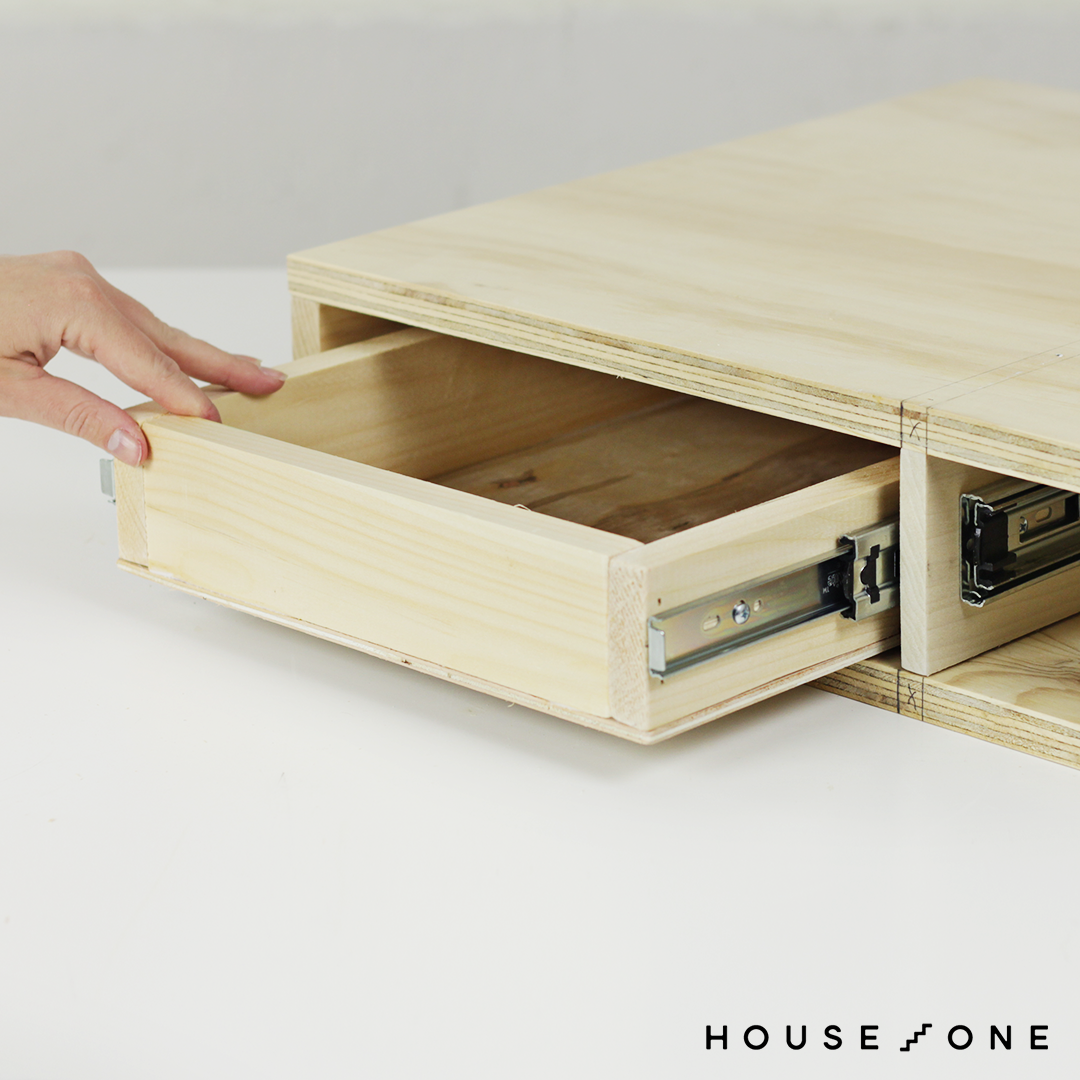
Place the drawers into the openings. For soft-close ball-bearing slides like ours, the first installation feels tough and requires an extra push at the end to seat the slide. Once the slide is correctly inserted, the drawer should then slide freely.
Step 11: Add the legs
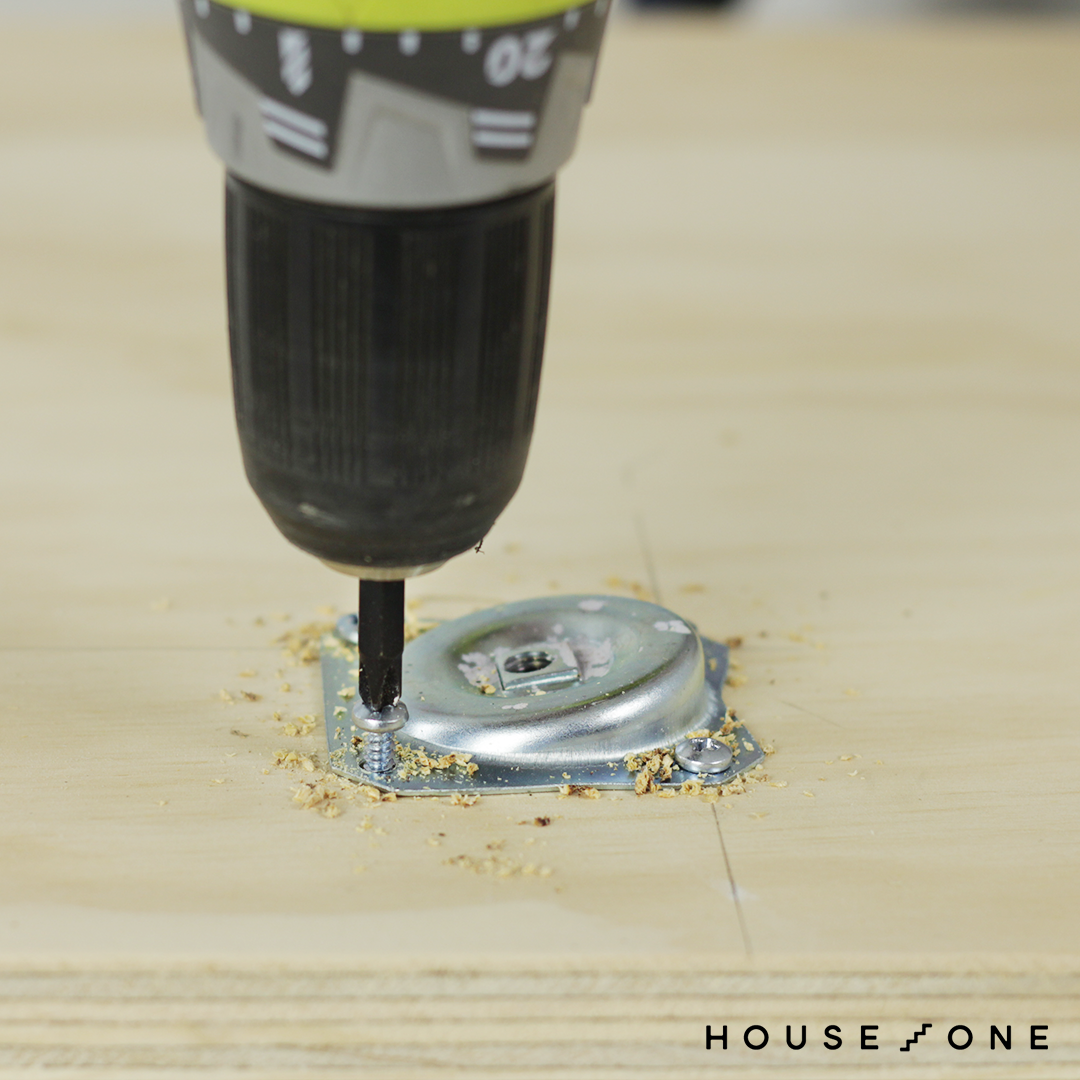
Flip the assembled desk box upside down. Mark a line 3 inches from the front edge and additional lines 8 inches from each end. Using the reference lines, position the angled leg brackets along the inside of the lines with their taper facing outward (i.e. towards the closest end of the deck). Install the brackets using a drill/driver and 5/8-inch screws. Thread the hanger bolt on the legs into the opening on each mounting bracket to secure the legs in place.
Step 12: Add the drawer faces
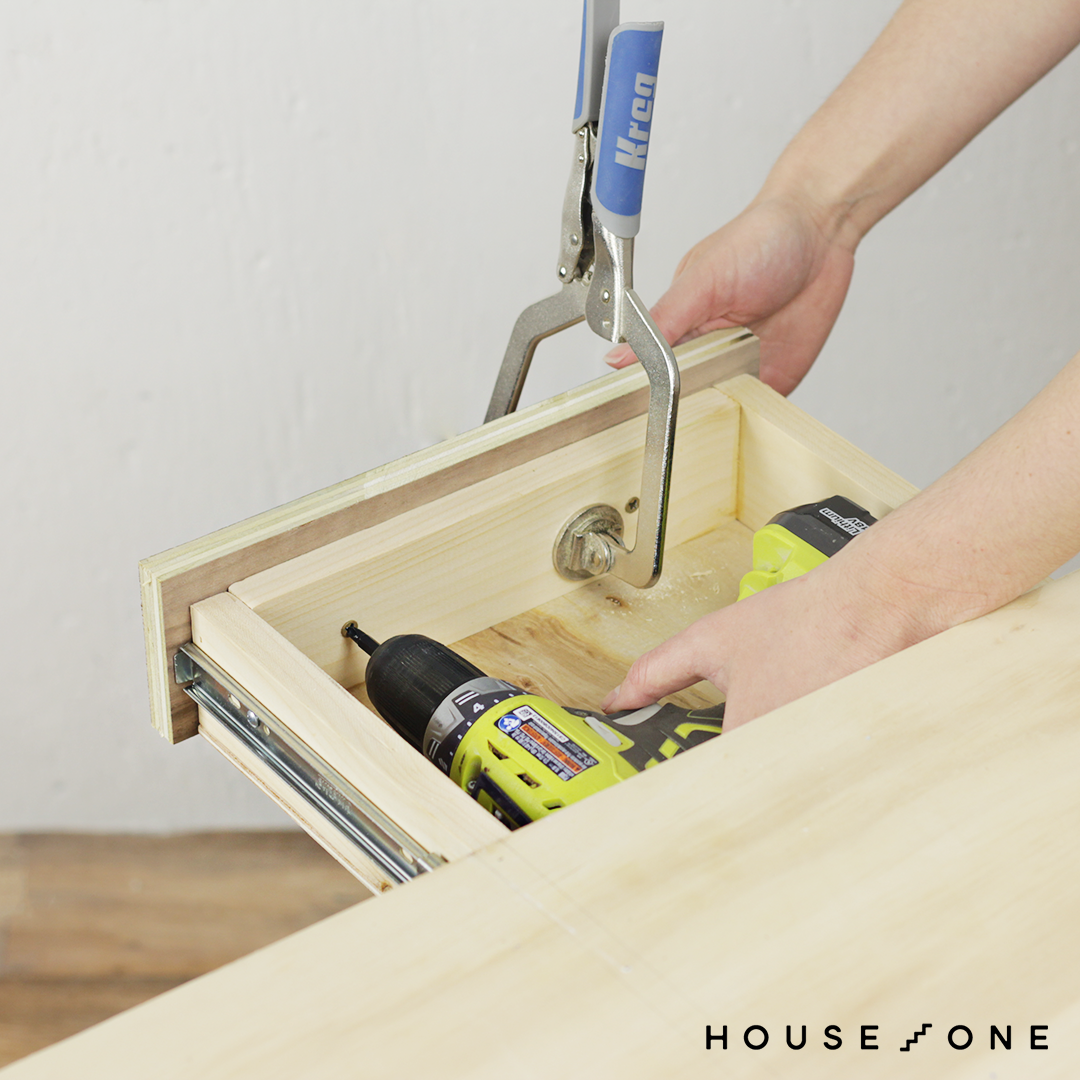
Position the drawer fronts against the face of each drawer centered on the height and width of the opening, creating an even 1/16-inch gap between the drawer face and desk body on all sides. Push the back of the drawer forward to access the inside of the drawer. Clamp the drawer front in place. Secure the drawer slide by driving 1-inch screws through the drawer box and into the backside of the drawer face. Mark and drill hardware holes in the front of each drawer face, and then mount the knobs or pulls (not shown).
Materials:
- (2) 3/4″ x 2′ x 4′ Plywood Panels
- (2) ½” x 4 x 4′ Boards
- (2) 1 x 3 x 8′ Pine Board
- (1) 1 x 4 x 4′ Board (Optional: Walnut)
- (1) ¼” x 2′ x 4′ Plywood Panel
- (4) 27½” Tapered Legs
- (4) Angled Top Plate Leg Brackets
- Wood Glue
- Wood Filler
- Sandpaper
- 1¼-inch Finish Nails
- 1-inch Wood Screws
